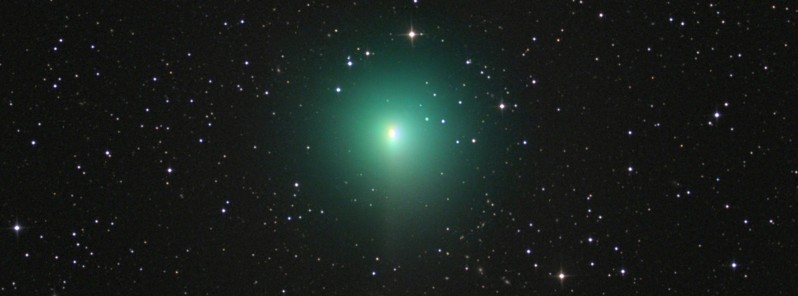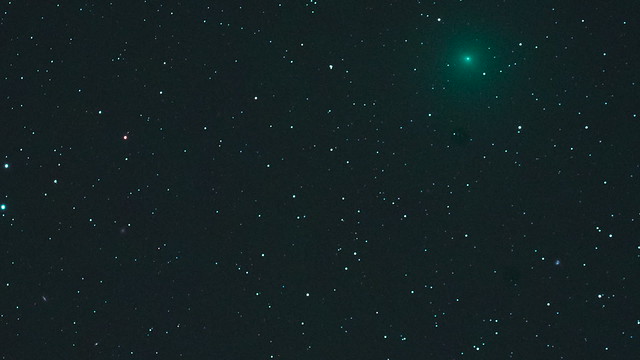Comet 41P/Tuttle-Giacobini-Kresák makes closest flyby since discovery

Comet 41P/Tuttle-Giacobini-Kresák will make a close approach to our planet on April 1, 2017, passing at a safe distance of 0.142 AU / 55.4 LD. This will be its closest flyby of Earth since its discovery in 1858.
41P/Tuttle–Giacobini–Kresák is a periodic comet, a member of the Jupiter family of comets, discovered on May 3, 1858 by an American astronomer Horace Parnell Tuttle. Its nucleus is estimated to be some 1.4 km (0.86 miles) in diameter and it orbits the Sun every ~5.4 years. The comet was recovered on November 10, 2016 at apparent magnitude 21 by the Panoramic Survey Telescope and Rapid Response System (Pan-STARRS) in Hawaii.
On April 1, 2017, 41P will pass 0.142 AU / 55.4 LD (21 200 000 km / 13 200 000 miles) from the Earth. The comet is expected to brighten to around magnitude 7 and be visible in binoculars. It will be an easy target for backyard telescopes and almost visible to the naked eye.
Optimistic estimates place the comet's brightness at magnitude +6, near the lower limit of naked-eye visibility. The best time to observe is during the dark hours before the sunrise when the comet is high in the northern sky.
41P will make its closest approach to the Sun (perihelion) on April 12.
Featured image: Comet 41P/Tuttle-Giacobini-Kresak Taken by Norbert Mrozek on March 27, 2017 @ Stottmert, Germany (via SpaceWeather.com)


So great to have precision sightings from astronomers on asteroids and comets that reach an observable sighting distance with binos (binoculars) or typical Celestron Telescopes. What has always been absolutely fascinating to me is the speed of light(Celeritas) that will eternally show us how vast and distance our universes are and that, in astronomic time, humanity and all life on earth has been in existence for the length of a spark of time. I do not mind pondering how humanity is so absolutely irrelevant and inconsequential in nature as we will, in due time, blindly suffocate for generations as we exhaust our natural resources. As all great powers come to an end, so will all forms of life as the global chemistry changes at an accelerated rate over the next few hundreds of years. It will be generations and so this extinction will never be an issue to humanity because, by the time humanity finds out and tries to take any kind of action, we will have been past The Point Of No Return. Anyway, astronomy is a precise science mathematically and it always poses philosophical questions about the origin and fate of life and of humankind. Astronomy studies should have more extensive funding just to enable humankind to, at least, have a stronger ability to see “Ahead of the Curve.”